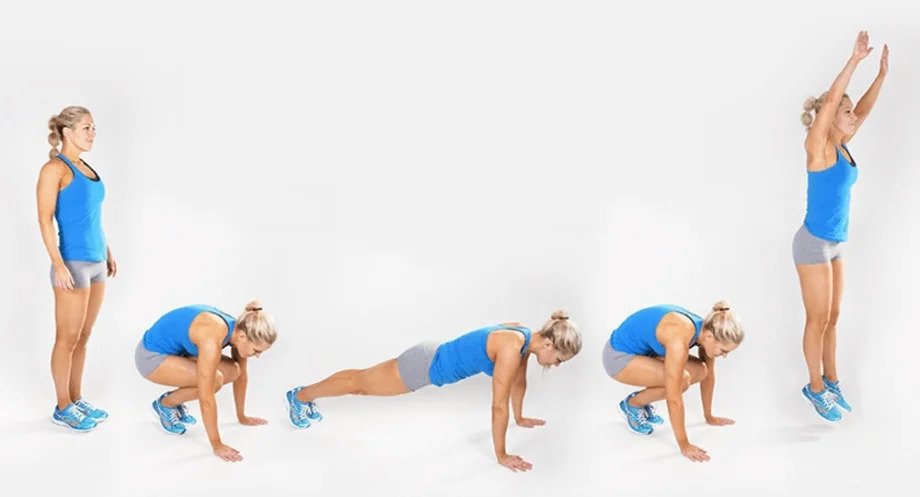Build muscle and burn more calories with static and self-resistance exercises.
When you want to burn calories and strengthens muscles without moving your muscles much, there is a way out – isometric exercises.
What is isometric exercises?
Isometric training involves static strength exercises, which means that the length of the muscles being used always remains the same during an activity. The muscles contract and are kept motionless under constant tension . Under isometric loading, neither pushing nor pulling movements take place, for example with the help of dumbbells, cable pull or sling trainers. Isometric exercises usually do without any equipment .
A good example is the plank – a classic isometric exercise. In contrast to crunches, in which you alternately shorten and lengthen the abdominal muscles, in the plank they are under constant tension.
Here’s an example, bring your palms together and press them against each other. You will feel a tension in your shoulders, chest and arm. It’s that simple, and there are many ways to do it.
Benefits of isometric exercises
It’s hardly a movement, but the target is contracted and activated. These exercises are great for building strength and burning 2 to 5 calories per minute. They are a godsend for people with shoulder and/or knee injuries and can even help lower blood pressure.
When you do isometric exercises regularly, you can achieve more muscle strength in a short time. This is because static training creates maximum tension in the muscle. This increases the activation level of the muscle, which in turn increases strength.
With this article, we’ll introduce you to the six best isometric exercises you can do in the gym or at home. Let’s get started!
Best six isometric exercise to strengthens muscles without moving
1. Chest Press

The isometric chest press is a great way to define your biceps and anterior pectorals.
Stand upright or sit on a chair that allows you to sit upright and feel your ischial tuberosities. Bend your arms at your sides with your elbows in line and pointing outward. The palms of your hands touch in the middle of your body and you press them together firmly.
Hold it for 10 seconds and relax. Do it 10 times.
2. One-leg press

Static leg presses against a wall challenge your entire body. Stand in front of the wall at a distance that the sole of your foot can reach the wall, with your leg bent backward at a 90-degree angle. Bend the leg slightly.
Bend the other leg backward at a 90-degree angle so that the lower leg is horizontal to the floor. Cross arms over chest and place hands on shoulders. Keep upper body upright and core tight. Now push the sole of your right foot hard against the wall, as if you were trying to push it away, without changing your body position. Hold the tension, count the time and switch to the other leg.
Hold for 3 seconds and release. Do 10 times before switching legs.
3. Plank

A good isometric exercise is the plank. In traditional forearm support, the plank works the core, side muscles, shoulders, and thighs. There are many variations. You can vary the angle of your elbows in relation to your shoulders, extend your arms, and open your feet to foot width or hip width.
For lateral support, you can lean on a forearm placed in front of you at a 90-degree angle or straighten the arm. As long as you are doing the lateral support isometrically-without movement-don’t try to let your hips sag down. Try to raise your lateral body as much as possible “to the sky”. To make it easier, you can lift one leg or place the bent foot of the upper leg sideways on the calf of the lower leg.
Hold for 10-30 seconds. Do this 3 times.
4. Wall sit

Squatting against a wall or an exercise ball against a wall activates the thighs, the back of the legs, and strengthens the glutes and calves. It is important to sit at a 90-degree angle with your back upright, your lower back straight against the wall, your legs hip-width apart, your feet parallel, and your toes relaxed. Your knees should be above your feet, not in an X or O position. They should also not be further forward than the toes.
A variation for advanced practitioners is the deep squat in the rider’s stance with the legs wide open. This exercise also works the leg muscles and stretches the entire posterior muscle chain.
If you have back problems due to shortening of the posterior muscle chain, this exercise can help restore balance to the anterior muscle chain and relieve back pain.
Hold this position for 10 seconds. Keep breathing. Do 6 times.
5. Hip bridge

The hip bridge is another isometric exercise that works both the back muscles and the glutes while toning the back thighs. Lie supine on the floor or exercise mat with your arms at your sides, palms down. Place your feet hip-width apart in front of you, flexing your legs. If possible, let your middle fingers touch your heels. Then lift your buttocks and back to form a raised straight line. To improve, you can stretch one leg to extend the line.
Hold it for 3 seconds and release. Do this 10-12 times each leg.
6. Strengthening the back

This exercise focuses on strengthening and flexing the back. Lie prone on the mat with your legs straight. Your forehead is centered on your forearms, facing the floor. As you exhale, raise one leg about four inches and hold it at that height. Then switch and do the same with the other leg.
Now place your legs straight on the mat and raise one straight arm four inches at a time, pulling your shoulder away from your ear – back down. You guessed it: for coordination, you can also do this exercise crosswise, lifting both arms or both legs at the same time, or stretching all four extremities upward.
Hold it for 3 seconds and release. Do this 10-12 times.
Pros and Cons of Isometric
Isometric exercises train strength and endurance. This is because holding a position for any length of time is an absolute challenge to your body, requiring stamina, strength and concentration.
Exercises such as wall sit or planks strengthen muscle groups that are essential for further exercises. This is because the deep muscles are stimulated and trained.
The disadvantage is that soreness can develop more quickly and the load is one-sided. You may also find it difficult to breathe because your concentration is at a maximum.
However, isometric exercises are useful in between to strength training certain muscle area and train your deep muscles.
With these exercises you have a full-body isometric program that will get your body in shape without any movement – but not without effort. Good luck!


